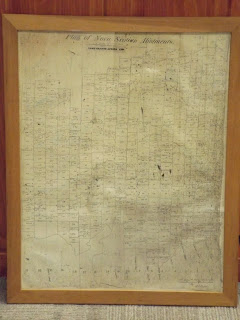Signed Nov 7,1775 Dunmore's
Proclamation would be the first chance of freedom for many enslaved people in
1775. Hundreds of men and woman took this opportunity and escaped their masters
to join Lord Dunmore and make up the Ethiopian Regiment. The first black unit in the
British army during the American Revolution. The Ethiopian Regiment was made up
of over 300 former slaves including a man named Titus who had escaped his
master John Corlies in New Jersey in hopes to reach Lord Dunmore and gain his
Promised freedom.
Titus made
his way to Virginia and joined the ranks of Dunmore’s Ethiopian Regiment. They
would see combat all though not properly trained to do so. The laws prohibited
slaves from possessing firearms of any kind and a shortage of ammunition would
cut back on any training or practice shooting. Most of the Ethiopian Regiment
most likely would have never fired a shot until actually faced with an enemy.
In December
of 1775 Lord Dunmore lost control of his forts and blockades that were holding
the patriots back from entering Norfolk. As lord Dunmore planned his retreat to
sea he ordered every available ship at his disposal to prepare to disembark and
flee the area before the patriots advanced. Chaos was inevitable as British
loyalists including the Ethiopian Regiment scrambled threw out Norfolk
gathering belongings and trying to find space on Dunmore’s ships. Citizens of Norfolk
panic not knowing how patriot forces will treat them when they took possession
of the town and worried about the 300 former slaves roaming town most of whom were
presently armed. When the ships were full only about half of the Ethiopian Regiment managed to find room on board. The
other half were disarmed and left to fend for them self’s. (some returned to their former masters, some fled for other
areas, while others were thrown in jail) better fates then what lay
ahead for most of the Ethiopian
Regiment who made it on board of Lord Dunmore’s
ships.
Life at
sea in Lord Dunmore’s fleet proved tragic for the Ethiopian Regiment. While Lord Dunmore, the better
off loyalists and a small number of the Ethiopian Regiment who managed to find
work on board were sailing on royal warships and tested sea vessels. Most of
the Ethiopian Regiment were forced to sail on smaller vessels not fit to go to
sea. The bad Living conditions on the overcrowded, unsanitary ships mixed with
not having the proper clothing was a recipe for disaster. An outbreak of
Jail Fever (epidemic typhus) hit Lord Dunmore’s fleet as soon as they set sail
and hit the Ethiopian Regiment the
hardest. Over packed ships made it easy for infected lice to pass the disease
from person to person. Quickly crippling the black loyalists with severe
headaches, absolute exhaustion, high fevers, twitching mussels, blood shot swollen
red eyes, stupor, delirium, and even death. The ones who fought the fever and
survived had to endure the symptoms for up to two weeks. Sadly the members of
the Ethiopian Regiment who perished onboard, would be stripped of their
clothing and dumped into the ocean. The person who wore the deceased’s clothing
would most likely catch the disease their self. By March of 1776 all most 150
members of the Ethiopian Regiment died from Jail Fever
More to come in
Part II





